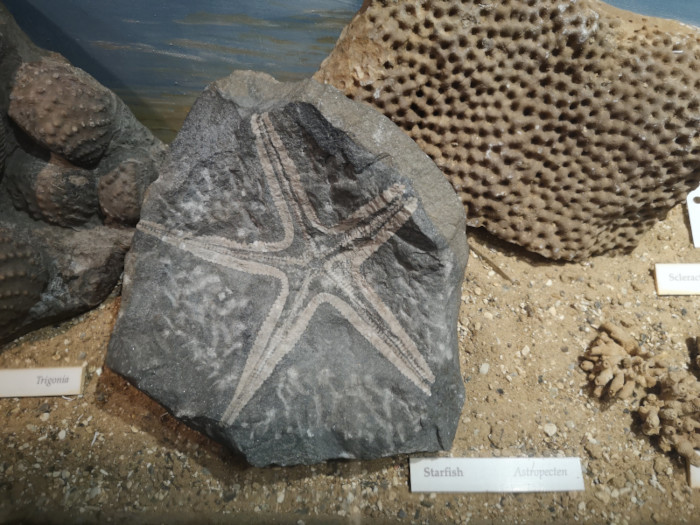Salt dough is easy to make and can be used to make all sorts of models - including starfish. This activity will show you how.
Fossil Jurassic star fish from the Sedgwick Museum

The Padlet is free and has a range of downloadable photos and activities that can be used with or without the Mary Anning loan box. Including a song, an activity led by artist Kaitlin Ferguson, drawing sheets, a biography of Mary and her contemporaries, and images of the fossils in the loan box.
Explore the Padlet
Find out more about our free loan boxes
Choose from fossils, rocks and dinosaurs.
The Sedgwick Mseum's loans boxes have been curated to support teaching of the rock cycle, fossils and dinosaurs. Each box has a range of objects representing geological time, rock types or species and each box is accompanied by some basic fact sheets. However they are not just for science lessons, use them for sorting, describing and creative writing.
Which do you think is the fastest, or the slowest of three main types of earthquake waves – surface, P waves and S waves? Have a race to find out.
In this activity you will see the difference in compressional P waves, transverse S waves and circular surface waves that are produced by earthquakes. You will need a big group of at least 15 people split into three groups.
This kit contains all the material you will need to make paint using pigments and a medium just as artists did (before ready-mix paint!). You can construct an experiment for students to explore the role of science in both the artist’s and the scientist’s workshop with reference to the technical analysis of the Renaissance painting, Cupid and Psyche by Jacopo del Sellaio. There is material provided with the kit that supports each of the suggested activities below.
Suggested activities
There are many different types of volcanoes. Shield volcanoes have a broad rounded shape and gentle splattery eruptions often described as fire fountains. Strato volcanoes are sharp and steep sided and have violent explosive eruptions. But what makes these two types of volcano look and erupt so differently? It is mainly controlled by how think (viscous) or runny the magma in the volcano is...
In this experiment you can use 3 different thickness (viscosity) liquids to see what differences runny or thick magma can cause in volcanoes.
Volcanic eruptions are driven by gas dissolved in molten rock (magma) underground trying to escape upwards. But what happens if the gas gets trapped and can't get out?
In this experiment you can trap more and more gas in a sealed container, in the same way gas can get trapped in a volcano, and see what happens...
Download the instructions and information sheet.
Volcanoes form when hot molten rock (magma) under the ground erupts at the surface, but what causes the molten rock to erupt? Eruptions are often driven by gases escaping…
In this experiment you can start a chemical reaction that creates a gas, and see how the gas escaping drives an eruption.
This experiment and video was devised by the Volcano Seismology group in the Earth Science Department, University of Cambridge.
Download the instructions and information sheet.
Museum Trails
If you are visiting the Museum with young children, why not download our Rainbow of Colour trail to print out and bring with you? It will keep the children entertained as they look for all the colourful specimens in the Museum, and they can even use it in the garden or any outdoor space too.
- rainbow_of_colour_trail_.pdf (1.35 MB)
School visits
To book a school visit please visit our webpages which have extensive information about what we can offer your school and how to book.
Browse our workshops by Key Stage

